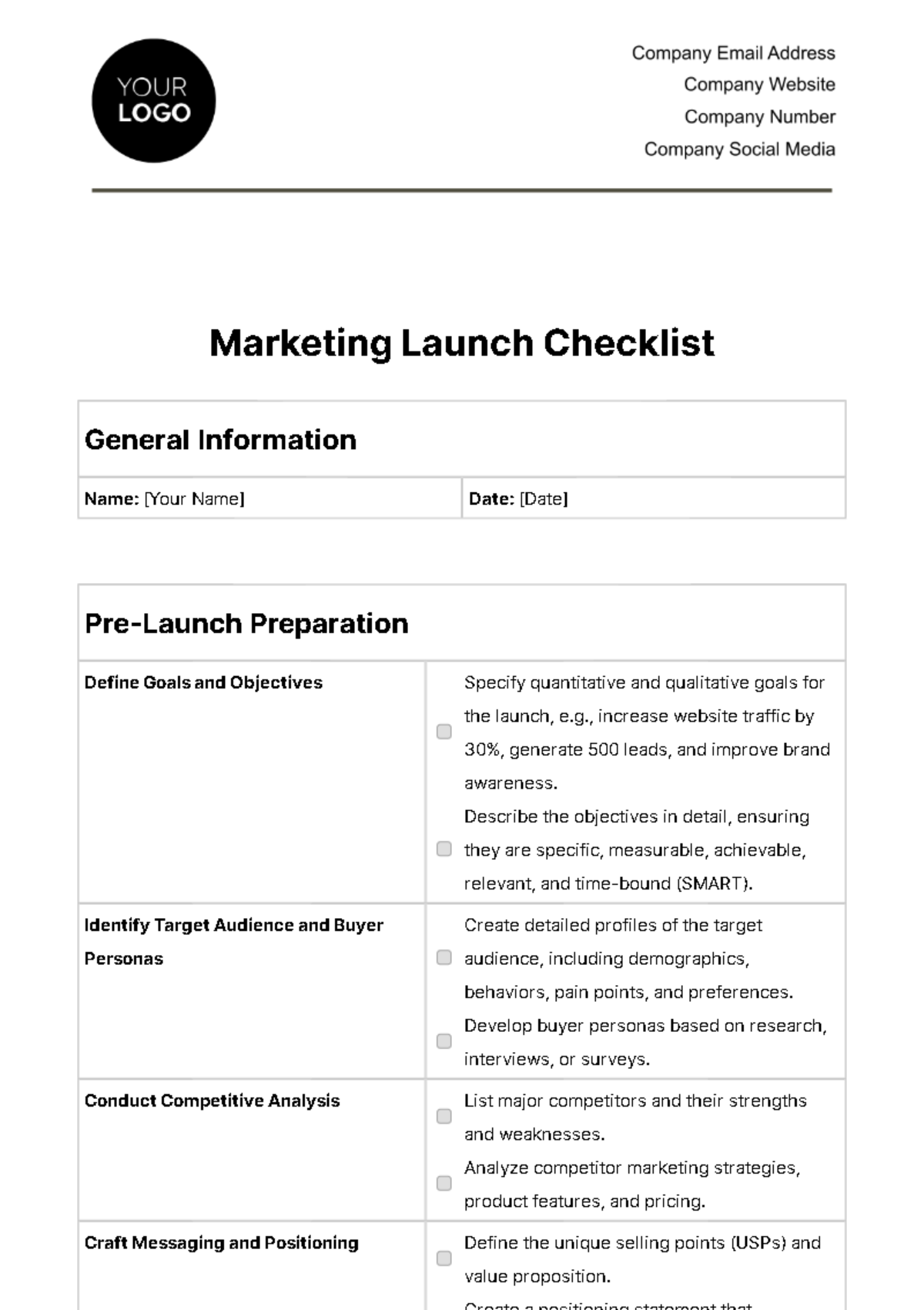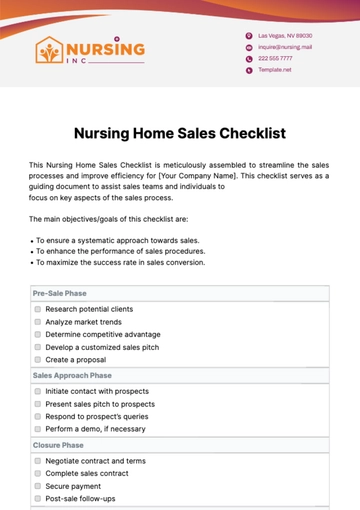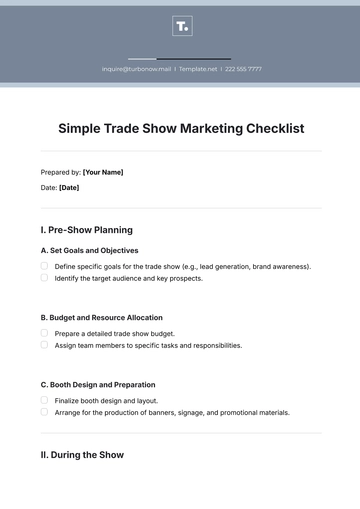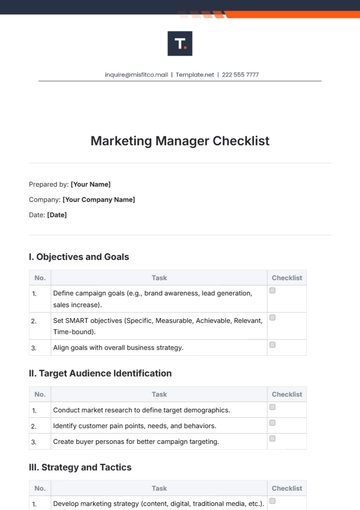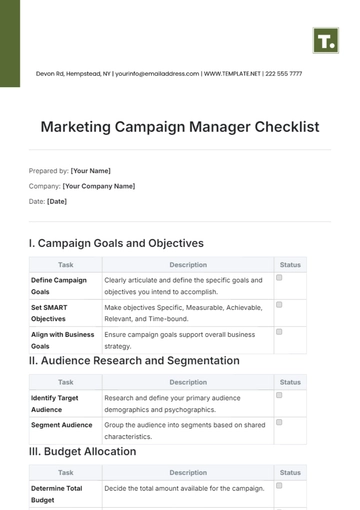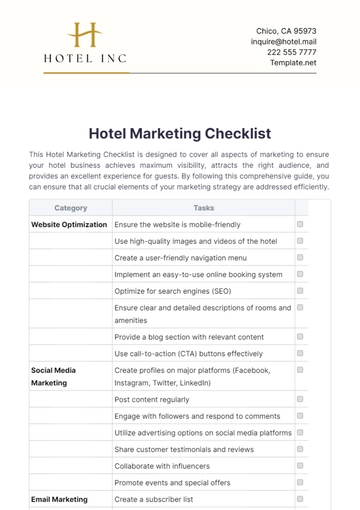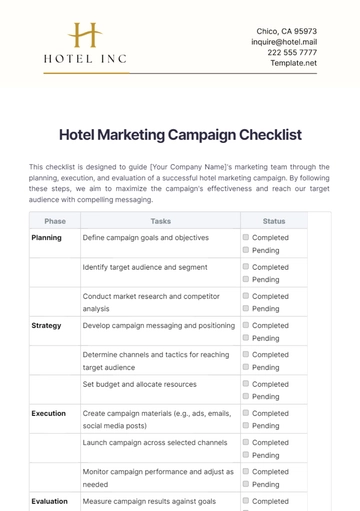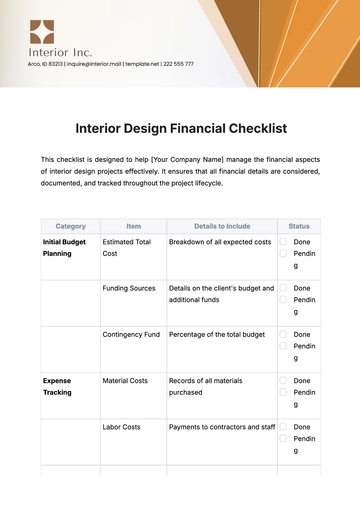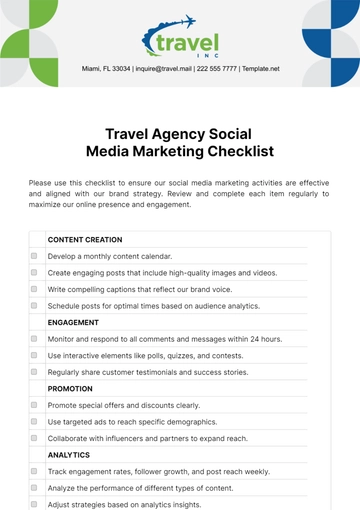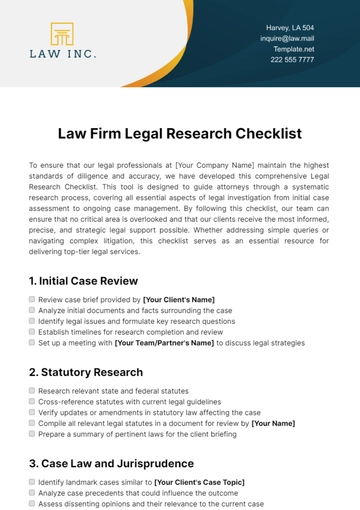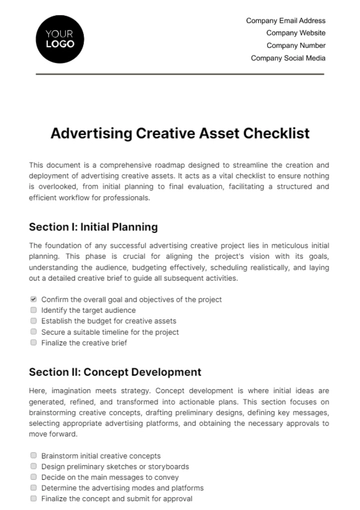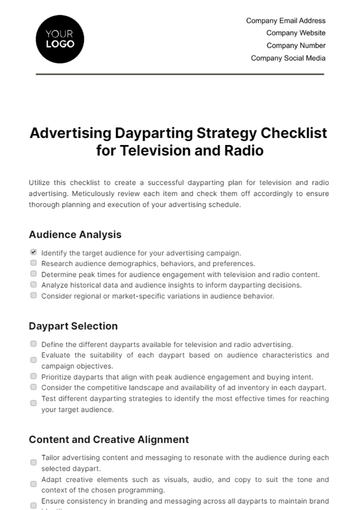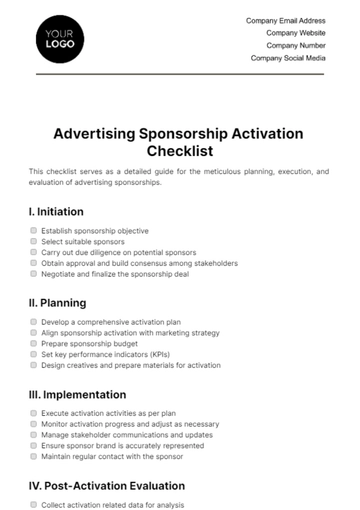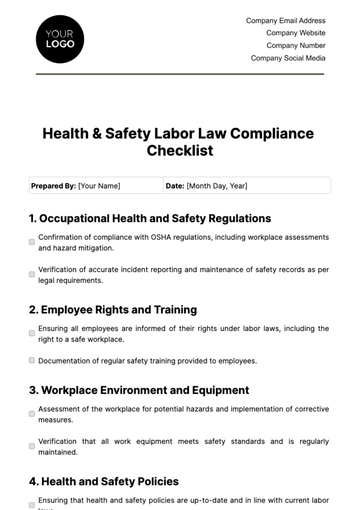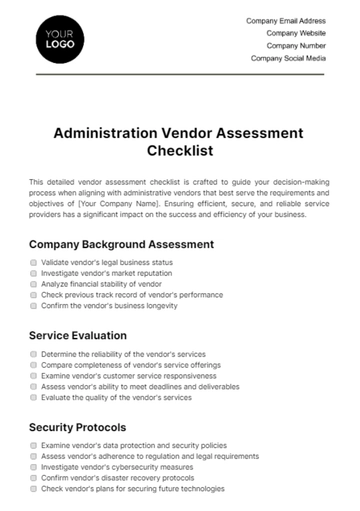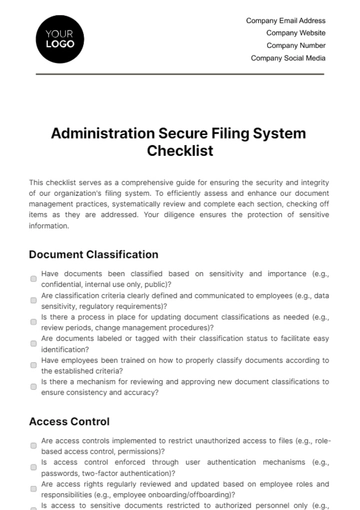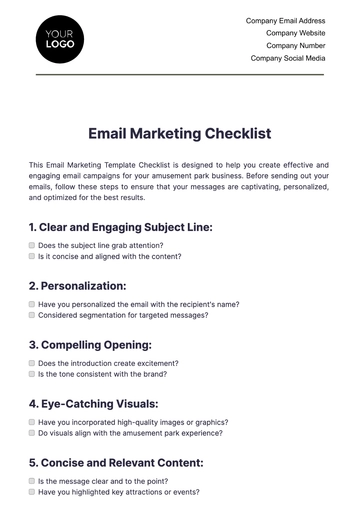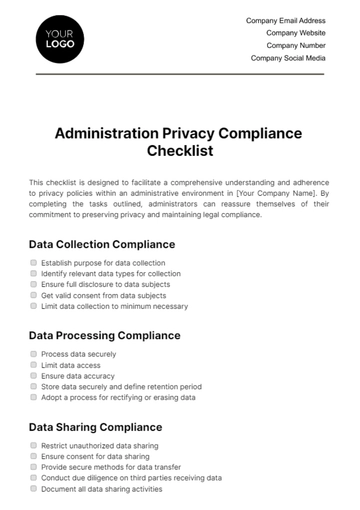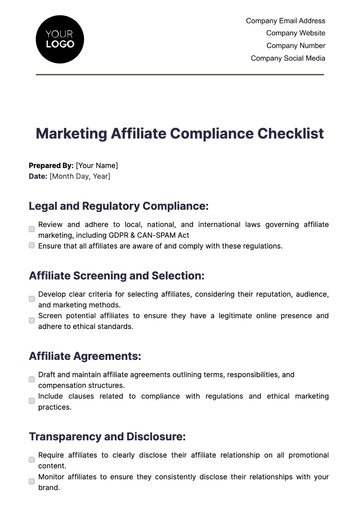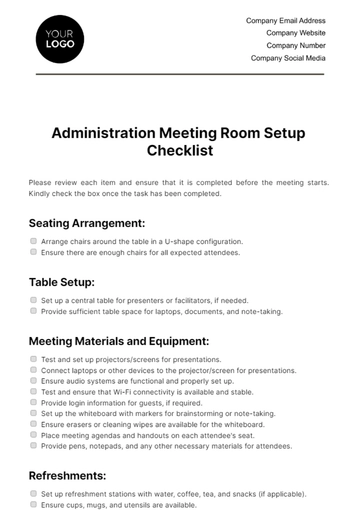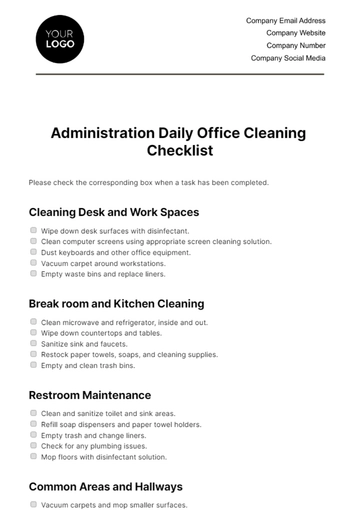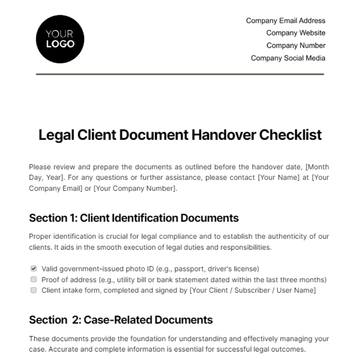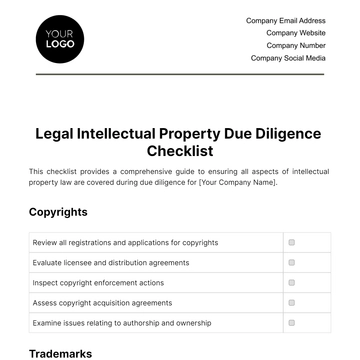Marketing Launch Checklist
General Information |
Name: [Your Name] | Date: [Date] |
Pre-Launch Preparation |
Define Goals and Objectives | |
Identify Target Audience and Buyer Personas | |
Conduct Competitive Analysis | |
Craft Messaging and Positioning | |
Determine Key Performance Indicators (KPIs) | |
Marketing Materials and Collateral |
Create or Update Marketing Materials | |
Develop Content for Marketing Channels | |
Ensure Website and Landing Pages are Ready | |
Prepare Social Media Content | |
Plan Email Marketing Campaigns | |
Marketing Channels and Strategies |
Choose Marketing Channels | |
Develop Strategies for Each Channel | |
Plan Advertising Campaigns | |
Implement SEO and SEM Strategies | |
Prepare PR and Media Relations Outreach | |
Event and Launch Date |
Organize Launch Events or Webinars | |
Promote Events and Coordinate Logistics
| |
Set a Specific Launch Date and Time | |
Testing and Quality Assurance |
Test Marketing Materials and Links | |
Verify Landing Page and Website Functionality | |
Ensure Email Campaigns Function Properly | |
Budget and Resource Allocation |
Allocate Budget for Marketing Activities | |
Confirm Availability of Necessary Resources and Team Members | |
Contingency Planning |
Develop a Plan for Potential Issues or Delays | |
Create a Backup Plan for Unforeseen Challenges | |
Post-Launch Activities |
Plan Follow-Up Emails and Engagement Strategies | |
Monitor KPIs and Performance Metrics | |
Analyze and Adjust Marketing Strategies as Needed | |
Documentation and Reporting |
Document the Entire Launch Process | |
Generate Reports on the Launch's Success | |
Share Insights and Learnings with the Team | |
Post-Launch Evaluation |
Evaluate the Launch's Overall Success | |
Collect Feedback from Stakeholders | |
Identify Areas for Improvement | |
Marketing Templates @ Template.net
